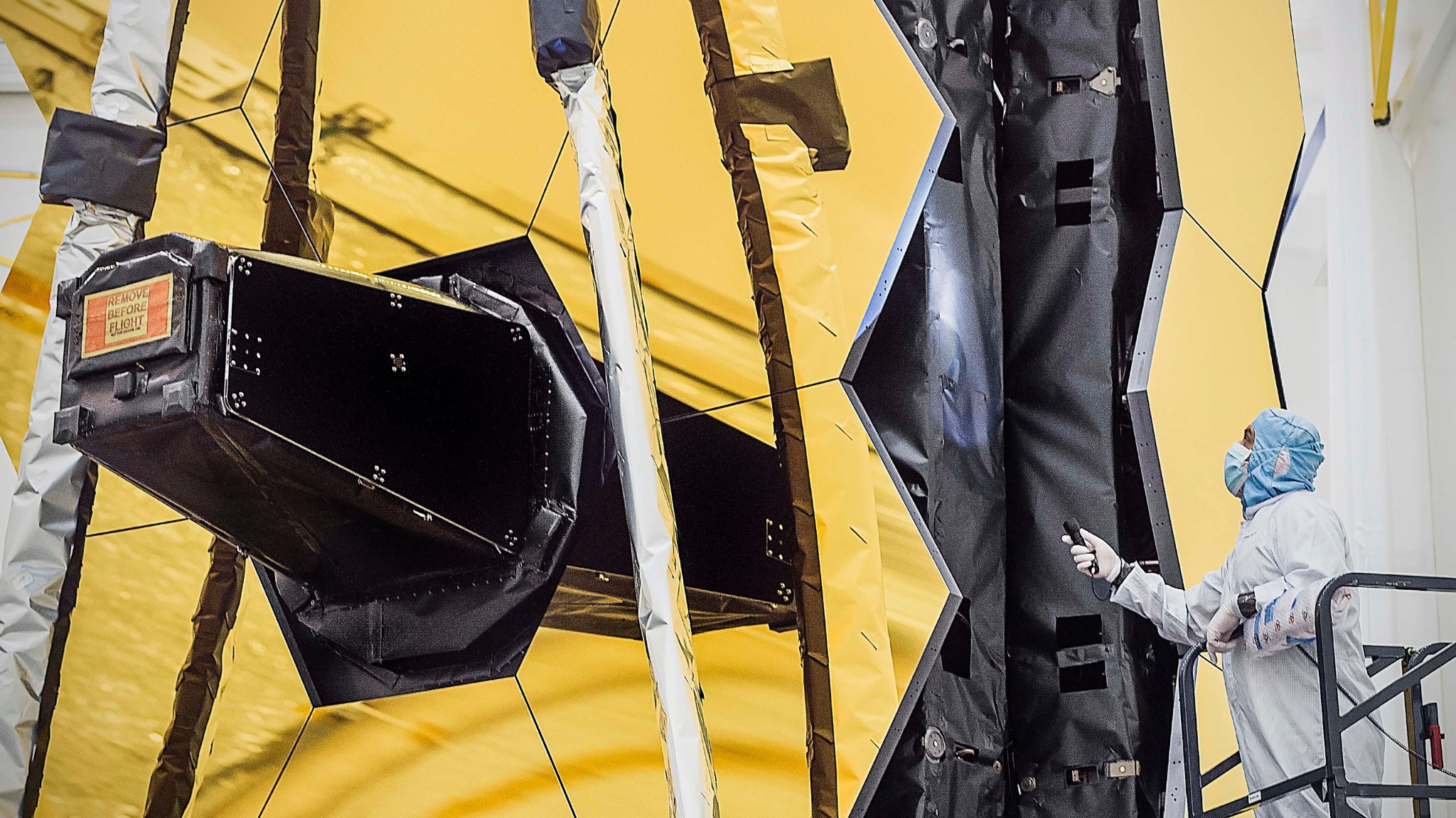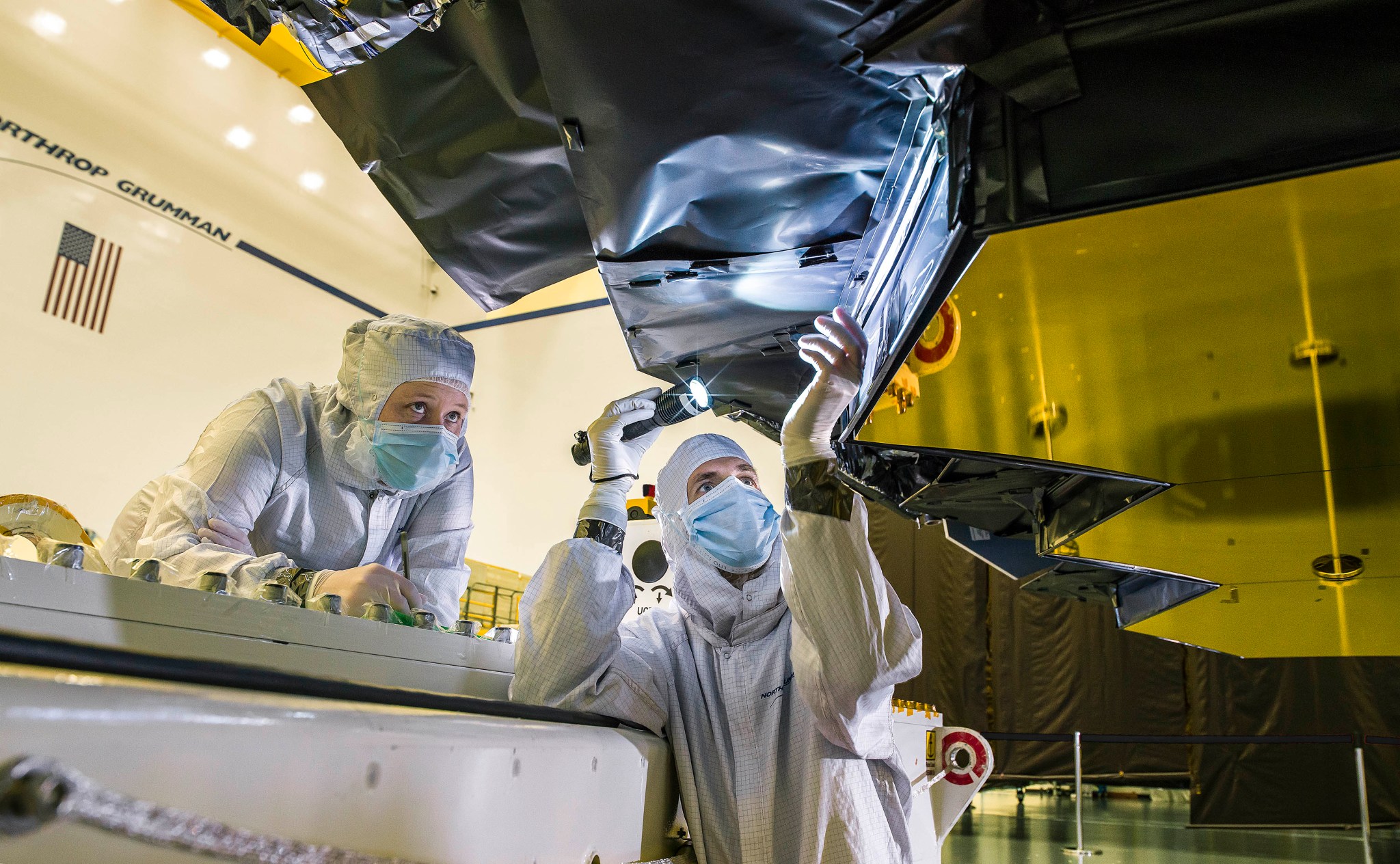To observe objects in the distant cosmos, and to do science that’s never been done before, NASA’s James Webb Space Telescopes’ scientific instruments need to be cooled down to a temperature so cold, it would freeze the oxygen in Earth’s atmosphere solid.

Intentionally chilling the telescope mirrors and instruments with innovative technologies and intelligent spacecraft design allows them to be far more sensitive to faint infrared light. Infrared can be described simply as heat, and if Webb’s components are cool, they are far more capable at observing faint heat signatures from the distant universe.
Webb was designed with a revolutionary 5-layer tennis-court-size sunshield that blocks the primary sources of heat in order to achieve an incredibly frigid temperature of nearly minus 400 degrees Fahrenheit (minus 240 degrees Celsius). In addition to the sunshield, there are a multitude of other innovative features which enable the telescope to achieve its unmatched sensitivity for faint infrared signals. One such feature is the protective barrier behind Webb’s primary mirror called “Frill.” This lightweight blanketing plays an important role on the observatory as it blocks unwanted light from reaching the telescope’s sensitive infrared sensors.
“Due to its origami unfolding architecture, the Webb telescope does not have a cylindrical light baffle, like is seen with Hubble or even your home telescope which is used to block unwanted light. Instead, Webb is a first of a kind “open” telescope that relies on the sunshield to block unwanted Sun, Earth and moonlight and relies on the Frill, shown here, to block light from stars and galaxies that are behind the telescope, that would hit the secondary mirror and get down into the science instruments that are extremely sensitive,” said Lee Feinberg, Optical Telescope Element Manager, James Webb Space Telescope at NASA’s Goddard Space Flight Center in Greenbelt, Maryland.

The James Webb Space Telescope will be the world’s premier space science observatory. Webb will solve mysteries of our solar system, look beyond to distant worlds around other stars, and probe the mysterious structures and origins of our universe and our place in it. Webb is an international project led by NASA with its partners, ESA (European Space Agency) and the Canadian Space Agency.
For more information about Webb, visit: www.nasa.gov/webb
For more information about the Webb’s infrared instruments, visit: https://www.nasa.gov/mission_pages/webb/instruments/index.html
By Thaddeus Cesari
NASA’s Goddard Space Flight Center


























